The Men Who Build Mountains
Mountains are often used as a symbol of the unshakeable, immutable and eternal. And yet, creating ideal conditions for winter sports often requires reshaping tonnes of soil, rock and vegetation to achieve the best possible compromise between the needs of resorts, residents and ecosystems that share the mountains.
Cover photo: Building a ski slope in China involves an additional challenge — how do you build slopes for customers when the majority of them have never skied before? ‘Chinese clients take us to the steepest, ugliest, most brutal mountain they can find and say, “Here, this must be a ski area”,’ says Mathews. The Changbaishan Mountains, on the border of Korea and China, posed just this problem. Ecosign compensated by designing a very large ‘apron’, a smooth, wide gentle slope perfect for anyone still finding their ski legs. (Photo: Fotohunter)
Paul Mathews needs a lot of machines to do his job. He needs satellites, helicopters, excavators and bulldozers. He needs GPS units and smartphones and huge fleets of trucks. But when he sits down at his desk in Whistler, British Columbia, the most valuable tool he has is a piece of thin, translucent onionskin paper. With it, he can build mountains.
Mathews is the president of Ecosign, one of the few companies that specialise in crafting ski runs as well as the facilities found at their feet. Working by hand, he can lay this paper over mountain maps, sketching out the lines of what will eventually become a complete set of superbly skiable pistes.
‘The design work is still manual; there’s no computer that’ll do it,’ says Mathews, a gruff mountain man and longtime Whistler resident who grew up in a skiing family in Colorado. ‘[The paper] lays over these different maps so we can switch from one to the other. Design is a unique thing; it’s in the head of the person that’s dreaming up something. The computers just give us the background tools.’

Working in Russia presents an interesting problem: mapping. Although detailed information was absolutely essential to for designing the Olympic slopes, Russia’s notoriously secretive government was none too eager to share images and data — particularly not with a Canadian company like Ecosign. ‘It’s a hangover from the Cold War,’ says Mathews. ‘The military controls the maps, and it’s still a very sensitive thing. We can’t get maps — we get them made using US satellites, which have perfect data, quite frankly.’ (Photo courtesy of Sochi 2014 Winter Games.)
The process of designing a ski run takes time, effort and an immense amount of money. The design of a resort alone can cost well over US$1 million before construction even begins. Nevertheless, at a time when China and the former Soviet bloc countries are willing to spend millions of dollars on new slopes, it’s a skill which is in high demand. Mathews and his team recently worked on the slopes for the 2014 Winter Olympics in Russia, turning the Western Caucasus mountains surrounding the town of Sochi into a skiable playground, one which will continue to draw crowds long after the games are over.
‘God didn’t make that much ski terrain, quite frankly.’ Paul Mathews.
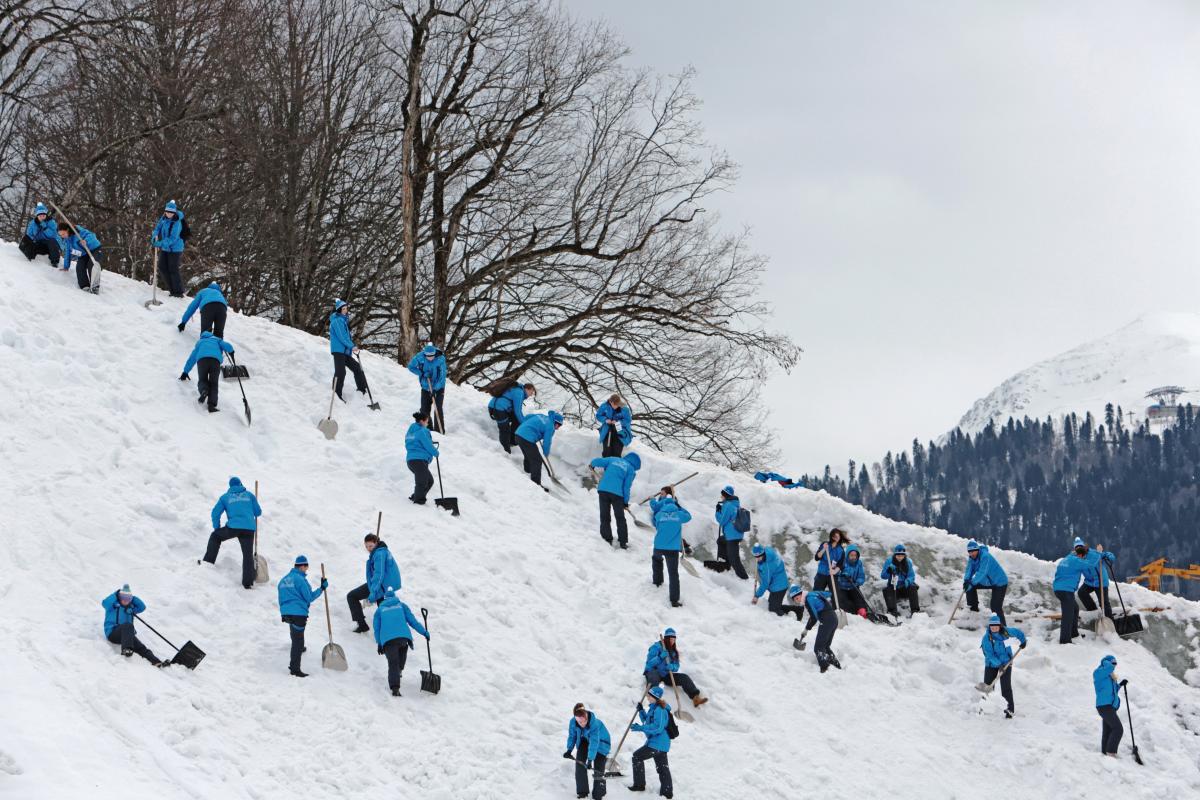
Volunteers prepare the snow for ski slopes at the Sochi Olympic Centre in Rosa Khutor. Sochi lies in the subtropic zone and is one of the few places in Russia that doesn’t have snow in the winter, a factor which helped to make the Sochi Winter Olympics the most expensive ever to be organised. Higher up in the Caucasus the organisers have been keeping 450,000m³ of snow in temperature-controlled storage since 2012 to ensure that there will be enough for the 2014 games. (Photo: Maria Plotnikova)
So how do they take an untouched mountain and make it skiable?
It begins with mapping. Slope designers start from up high, taking satellite photographs of up to 28,000km² (10,800mi.²) of mountain range. ‘Highly accurate mapping is a very important tool for us to use,’ says Peter Williams, Senior Mountain Planner at SE Group, a company which is perhaps Ecosign’s biggest competitor and which has pioneered much of the science since its founding in the 1950s. ‘You need to spend the money to get maps with pretty small contour intervals.’ That information enables them to calculate levels of solar radiation for each part of the terrain and find areas with just the right slope and exposure to produce dry, powdery, perfect snow.
Having identified stretches with optimal snow conditions, the designers need to narrow their selection down to the ones that are actually skiable. Some will be too steep or too flat. Others will have streams, rock-piles, heavy vegetation or other obstacles. ‘Pretty soon,’ Mathews says, ‘you have this big area that has a lot of places you can’t go.’
Useable slopes are then colour-coded according to the challenges they’ll present to skiers, and a final selection is made to achieve a carefully balanced resort: too many steep, tricky slopes will turn away the novices, but too many beginner-friendly runs will bore the pros. And of course the slopes have to connect, converging on places where ski-lifts can be installed. ‘You figure out the best places to lay in the lifts,’ says Williams. ‘You have to make sure the circulation works so you can get from one part of the mountain to the other easily.’
An average skier may be familiar with Paul Mathews’ work. His company has designed over 320 ski areas in 34 countries, from Canada all the way to China.
Of course, not all decisions can be made at the drawing board; slope designers need to get out on the ground. Teams head out on snowmobiles or in helicopters, working in summer as well as winter to get a good feel for the terrain. ‘When I started’, says Mathews, ‘I took a compass and a chronometer and a measuring chain and had to survey my way through the wilderness! Today, it’s a lot easier—the young guys in the office have it made.’
You seem to enjoy a good story
Sign up to our infrequent mailing to get more stories directly to your mailbox.It’s dangerous work. Designers often have to work in raw terrain where the snowpack is loose and deadly avalanches can cascade down the mountainside. In 1988, Mathews was up on Mount Odlum in the Canadian Rockies, doing work for the Calgary Winter Olympics. He and a colleague flew up in a French-made AStar helicopter, and as they were circling the mountaintop, it became clear that the chopper was far too heavy. Mathews told the pilot to put them down in the snow and wait for them. The pilot didn’t listen.
‘No sooner were we out of the machine, and it was up in the air about 80m (260ft),’ Mathews recalls, ‘I heard the stall horn go off, and it spiralled down like a hammer. It crashed 30m (100ft) away from us and broke the fuselage in two. They found later that it was overweight, and the pilot wasn’t good in the mountains at all.’
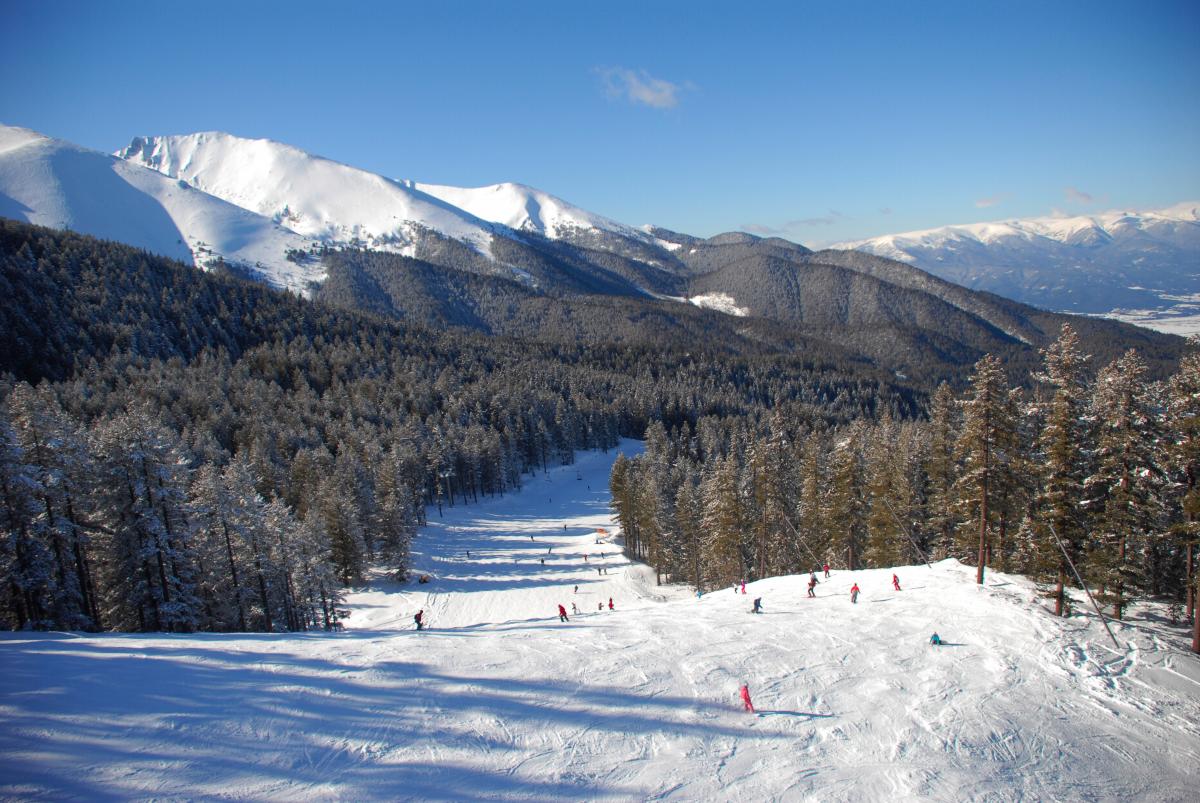
Bulgaria’s Pirin Mountains are gorgeous to ski on, but developing there can be a nightmare. In their natural state, the slopes are packed with trees which need to be cut flush to construct good runs. Felling trees isn’t technically difficult, but the resulting backlash from the local population can be tricky to negotiate. In areas like Bansko, Ecosign has encountered huge protests organised by activists who claim that its work destroys animal habitats and creates air pollution. (Photo: Urban Eye)
Still, with a little luck, after six months of collecting data and drawing maps, the onionskin paper is full of skiable lines. Now for the tricky part: building the slopes themselves. It’s a process that can take years.
There’s an almost zen quality to it, because while great snow is the end goal, it’s not the most important factor. Resorts can make snow (and most of them do, festooning their slopes with snow cannons) but they can’t create good terrain. They can only find terrain that works and make it better, and good slope designers need to know as much about botany as they do about navigating a black diamond run.
Grass is good. It has a wide root area and lets the soil moisture tension get high enough to prevent trees from taking root. Where possible, designers will plant grass seed, relying on huge excavators which trundle up the mountain to dig up the soil. Any trees that need clearing get cut flush, and the wood is lifted away by helicopter or pulled down the mountain on cables. Some obstacles resist even the big earth moving machines, Mathews says, and require more extreme measures: ‘Sometimes we have to blow up some rocky stuff that gives us problems, then put soil down over it and then get the grass re-established on it. If you get all that work done by autumn, then the following spring when the snow melts it puts water in the soil, and you don’t need to touch it. By June beautiful, bright-green grass is springing up.’
‘The ecological impact they have varies a lot,’ says environmentalist Gavin Feiger. ‘The biggest factors are the timing of the construction, the type of habitat they’re altering, and the amount. If they go in and clearcut out some new runs, and they’re doing that in the autumn, it’s not going to be as big an effect because there won’t be as much run-off or erosion. If you do it in the spring, as soon as things thaw out you get your erosion.’
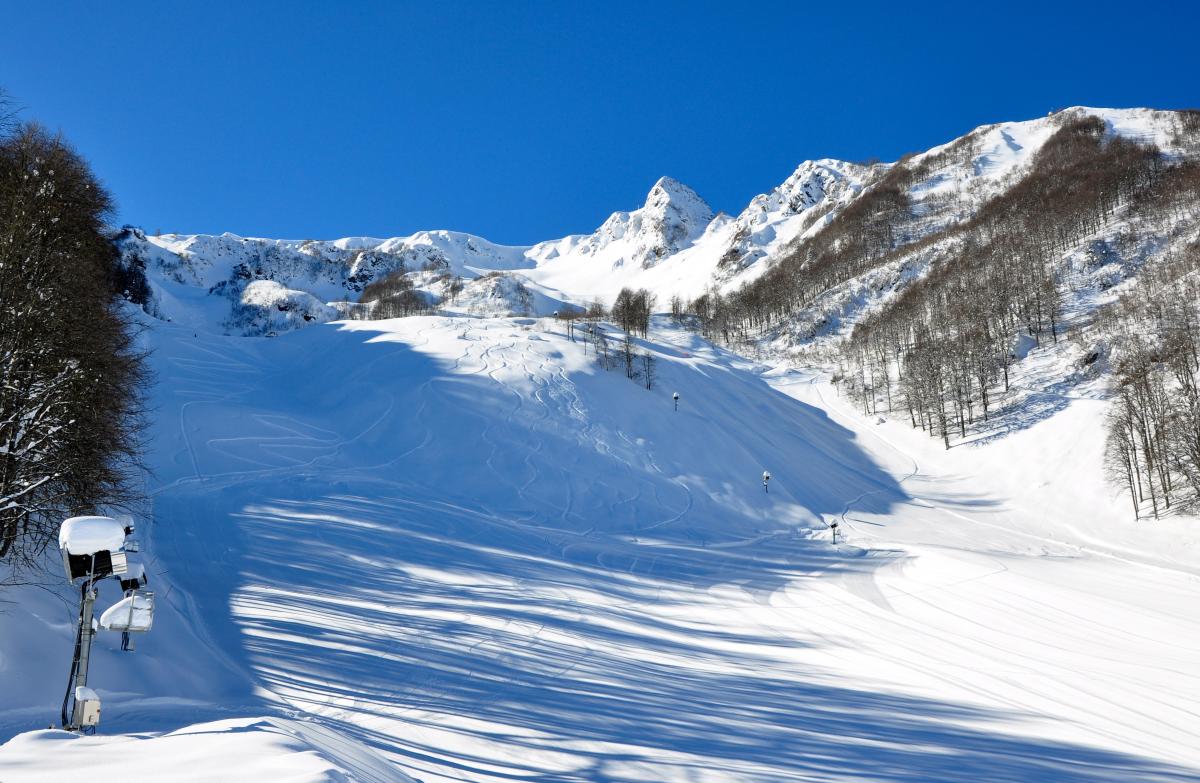
In 2000, Paul Mathews was in a private jet above the Caucasus Mountain Range in Russia when he looked out of the window and saw skiing heaven. With bodyguards watching their backs in the dangerous region, Mathews and his team went on foot and by helicopter to assess the terrain. Over the next ten years, the slopes around the town of Sochi would grow from a commercial ski resort into the new home of the 2014 Winter Olympics, with courses for cross-country and downhill skiing. (Photo courtesy of Sochi 2014 Winter Games.)
Every so often, perhaps surprisingly seldom, teams will need to go below the surface to modify the terrain itself. Topsoil is stripped with an excavator and stockpiled until the ground below is sloped correctly. The topsoil is replaced, and seed and hay mulch are spread to establish the grass again. ‘We can change the angle of the slope to a relatively minor degree,’ says Williams. ‘You’re not going to go in and make some massive changes to it […] You can grade out ridges and make them wide enough for skiing. But it gets very expensive very quickly.’
Good ski slopes don’t come cheaply, to be sure. Tens of millions of dollars can be spent on a single resort, and since the number of new resorts being built is dwindling, the competition is fierce. Both SE Group and Ecosign have expanded into Asia and Eastern Europe, helping develop mountains in China as well as in places such as Bulgaria, Kazakhstan and the already mentioned Sochi. There’s no question that some of the biggest challenges in building a new set of slopes come from man, rather than nature, as governments and corporate bureaucracies cover mountains in red tape.
There are ecological questions too. Big ones. Mountains are complex ecosystems, and ski slope designers often come under fire for what they do. When Ecosign went to Almaty in Kazakhstan to work in mountains that shared space with a national park, they faced anger from residents. Increased air pollution and the endangerment of wildlife were the main concerns, and some campaigners claimed that the development would harm the habitats of an extremely rare snow leopard.
There’s a sense of playing God here, of man taking nature and improving on it, a goal of almost biblical proportions.
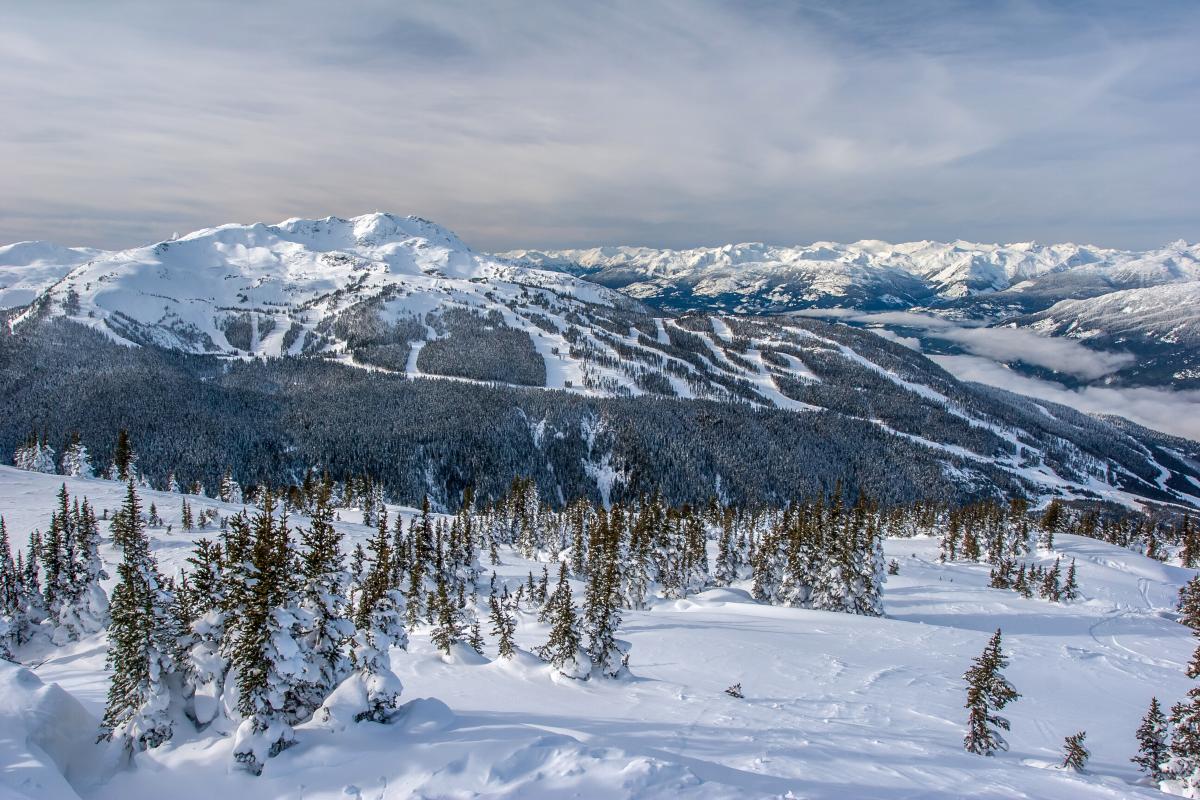
With over 200 runs and 3,307 ha (8,171 acres) of skiable area, Whistler Blackcomb is the largest ski resort in North America. Mathews, a longime Whistler resident, took on Blackcomb as one of his earliest projects back in the 1970s. Ecosign also designed the Whistler Olympic Park for the 2010 Vancouver Olympics. ‘The site for the Olympic park was pure virgin territory. There was nothing there. We personally went out and flagged all the trees that we wanted to save,’ saysid Mathews about reducing the footprint of the park. (Photo: Pierre Leclerc)
Mathews is dismissive, claiming that designers rarely use more than 5% of a mountain’s total land area. ‘The Greens are very suspicious of our work,’ he says. ‘We’ve been criticised in Kazakhstan and Switzerland and Canada for even wanting to go into the mountains. Some people would like to lock the mountains up.’
Of course the less the mountain is altered, the better it is for everyone: the environmental groups, the slope builders and the people footing the bill. Says Williams, ‘We try not to change the physical character of the mountain too much. It creates a much better ski product if you have something natural, with open bowls and open tree stands, and which you don’t have to do too much grading on. It creates a much more interesting ski experience.’
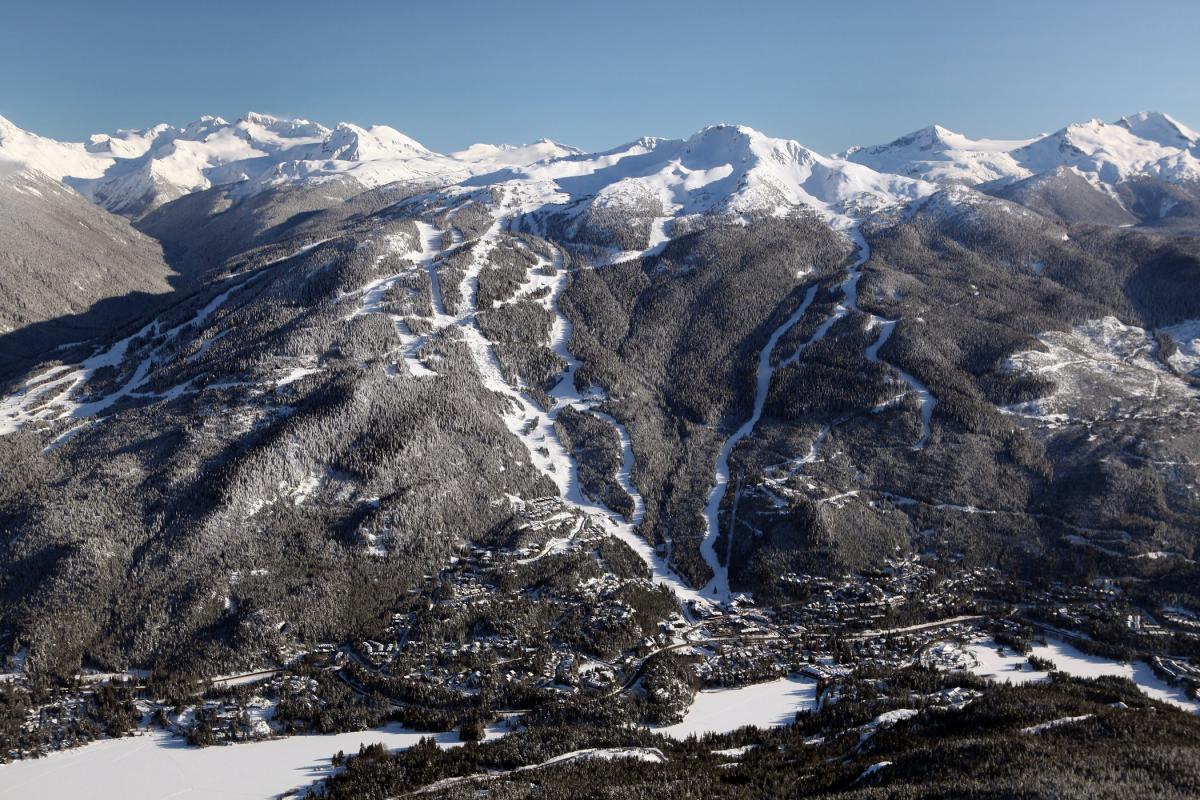
(Photo: Randy Lincks)
Both Mathews and Williams stress the need for variety and natural features on their runs, and skiers and snowboarders praise the final results. David Benedek, a former professional snowboarder and author of the gigantic book Current State: Snowboarding, says that diverse terrain is key. ‘You need to have pitches and turns to keep it interesting. It has to change constantly. You need a run that […] can work in things like jumps where necessary.’
Eventually, when the earth movers are back in their garages, and the onionskin paper is stowed away, the designers actually get a chance to ski their creations. ‘I get two things out of that,’ says Mathews. ‘One is my own enjoyment of skiing the slopes and, really, checking the work of all my guys. Two is riding the lift and skiing beside the new customers there and seeing their enjoyment. That’s the real payback. Seeing people flocking to the area with smiles on their faces was very rewarding.’

